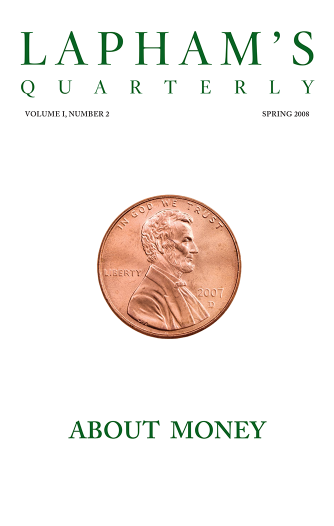History is a people’s memory, and without a memory man is demoted to the level of the lower animals.
—Malcolm X, 1964Product Placement
A call to return the Parthenon Marbles.
It is surely high time for us to think how and when the Elgin Marbles are to be restored to the Acropolis. There they will have ultimately to rest, and the sooner, and the more gracefully it is done, the better.
The ninety years which have passed since they left Athens have entirely changed the conditions and the facts. The reasons which were held to justify Lord Elgin in removing them, and the British government in receiving them, have one and all vanished. All those reasons now tell in favor of their being restored to their national and natural home. The protection of these unique monuments, the interests of students of art, pride in a national possession, and the vis inertia of leaving things alone all call aloud to us to replace on that immortal steep the sacred fragments where Pericles and Phidias placed them more than two thousand years ago.
It is usual to say that in the British Museum these priceless works are safe, while they would be exposed to danger in Athens; that in London the art students of the world can study them, while at Athens they would be buried out of sight; that the Elgin Marbles are now become a “British interest” as completely as Domesday Book; that as they have belonged to the nation for seventy-four years, it is too late to talk about disturbing them now.
Every one of these assertions is a sophism, and the precise contrary is in every case true. They would be much more safe from the hand of man on the Acropolis than they possibly could be in London; and while the climate and soot of Bloomsbury are slowly affecting their crumbling surface, the pure air of the Acropolis would preserve them longer by centuries. Athens is now a far more central archaeological school than London; and the art students of the world would gain immensely if the ornaments of the Parthenon could be seen again together and beneath the shadow of the Parthenon itself. The Parthenon Marbles are to the Greek nation a thousand times more dear and more important than they ever can be to the English nation, which simply bought them. And what are the seventy-four years that these dismembered fragments have been in Bloomsbury when compared with the 2,240 years wherein they stood on the Acropolis?
Of course, the man in Pall Mall or in the club armchair has his sneer ready—“Are you going to send all statues back to the spot where they were found?” That is all nonsense. The Elgin Marbles stand upon a footing entirely different from all other statues. They are not statues: they are architectural parts of a unique building, the most famous in the world, a building still standing, though in a ruined state, which is the national symbol and palladium of a gallant people, and which is a place of pilgrimage to civilized mankind. When civilized man makes his pilgrimage to the Acropolis and passes through the Propylaea, he notes the exquisite shrine of Nike Apteros, with part of its frieze intact and the rest of the frieze filled up in plaster, because the original is in London. He goes on to the Erechtheum, and there he sees that one of the lovely caryatids who support the cornice is a composition cast, because the original is in London. He goes on to the Parthenon, and there he marks the pediments which Lord Elgin wrecked and left a wreck stripped of their figures; he sees long bare slices of torn marble, whence the frieze was gutted out, and the sixteen holes where the two ambassadors wrenched out the metopes. We English have wrung off and hold essential parts of a great national building, which bears wreckage on its mangled brow, and which, like Oedipus at Colonus, holds up to view the hollow orbs out of which we tore the very eyes of Phidias.
Naturally, the antiques found in Greece form a far more important interest to the whole nation than they can to a nation which has simply purchased or “conveyed” them. No people in the world are so intensely jealous of their national memorials as the Greeks of today. They form their claims to sympathy as a people, the symbol of their traditional past, their peculiar claim to a unique interest. They have made stringent laws not only to keep every fragment of antiquity in the country but to keep every fresh discovery in the very district and spot where it is found.
By what right, except that of possession, do we continue to withhold from the students and pilgrims who flock to the Acropolis from all parts of the civilized world substantive portions of the unique building which they come to study, those decorations of it which lose half their artistic interest and their historic meaning when separated from it by four thousand miles of sea? The most casual amateur, as well as the mere tyro in art, can at once perceive how greatly the Phidian sculptures gain when they can be seen in the Attic sunlight, alongside the architectural frame for which they were made, and at least under the shadow of the building of which they form part. The ruined colonnades are necessary to explain the carvings; and the carvings give life and voice to the ruined colonnades. These demigods seem to pine and mope in the London murk: in their native sunlight, the fragments seem to breathe again. On the Acropolis itself, every fragment from Phidias’ brain seems as sacred and as venerable as if it were the very bones of a hero. In a London museum, they are objects of curious interest, like the dodo or the Rosetta stone—most instructive and of intense interest—but they are not relics, such as make the spot whereon we stand sacred in our eyes.

Frederic Harrison
From “Give Back the Elgin Marbles.” In 1802, claiming permission from the Ottoman Empire, Lord Elgin began removing to England hundreds of Greek antiquities, including half the friezes that had decorated the Parthenon since the fifth century bc. In 1816, deeply in debt, he sold the collection to the British government for £35,000. Harrison, an author and lawyer, published this article in The Nineteenth Century, prompting the magazine’s editor to pen a sarcastic rebuttal. The British Museum continues to defend its acquisition, arguing in 2019 that “when you move cultural heritage into a museum, you move it out of context. Yet that displacement is also a creative act.”




